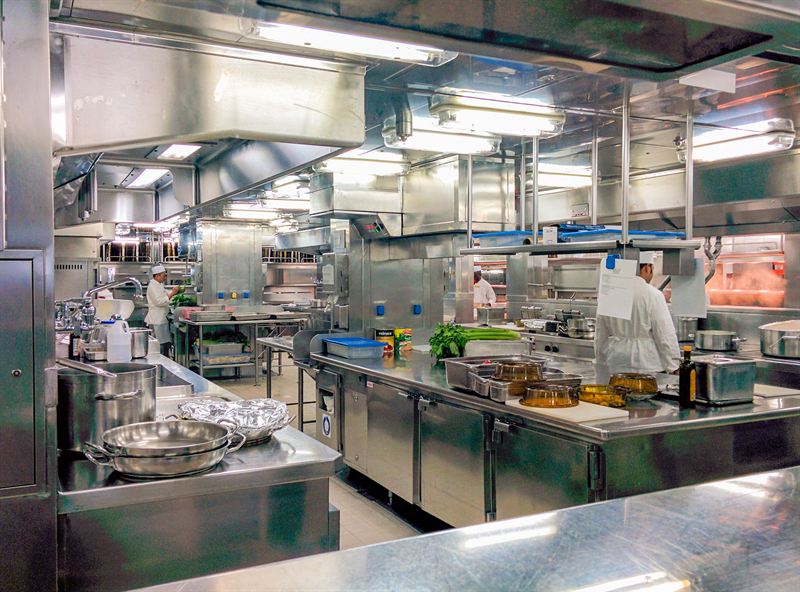UPDATED GUIDE CAN HELP PREVENT KITCHEN FIRES

B&ES warn that a poorly maintained kitchen extraction ductwork is a huge fire risk and insurance companies can refuse to pay up if a fire is traced back to grease laden ductwork. Out now is the newly updated ‘TR/19 Guide to Good Practice – Internal Cleanliness of Ventilation Systems’. Proprietors should be aware that many insurers now advise that, unless ventilation systems are cleaned to the standards set in TR/19, claims in the event of commercial kitchen fires may not be successful.
4 March 2015 – There has been a number of cases in recent years where building owners have suffered huge financial setbacks when their insurer has refused to pay out following a kitchen fire traced back to a build up of grease in the kitchen ductwork; grease that should have been removed had there been a proper maintenance regime in place – which is usually now a condition of insurance policies that cover commercial kitchens.
Bob Towse, Head of Technical and Safety at B&ES, the Building & Engineering Services Association, comments, “If there is a coating of grease inside the ductwork it will act as a highly efficient transmitter of heat and flames through the rest of the building; all it needs is an ignition source – and kitchens have plenty of those. A fire will often start inside the ductwork simply because the temperature becomes high enough to ignite the accumulated grease, and 90% of catering fires are intensified by ignition of grease deposits in grease extract ducting.
“As a result, many insurance providers will include caveats in their policies that can lead to claims being rejected on the grounds that the building operator has failed to maintain the ventilation system effectively – or cannot prove that they have maintenance strategies in place.”
B&ES has just released an updated ‘TR/19 Guide to Good Practice – Internal Cleanliness of Ventilation Systems’, which incorporates reference to the new British and European Standard BSEN 15780 ‘Ventilation for Buildings – Ductwork – Cleanliness of Ventilation Systems’ introduced in 2011 and, for the first time, highlights the current best practice for ensuring that kitchen extract systems are maintained to minimise the risk of fire associated with grease accumulation. In addition to a regular cleaning regime, TR/19 offers guidance on the fitting of efficient filtration systems such as the new generation of high-capacity filters that are capable of removing up to 94.6% of grease deposits.
Bob Towse adds, “The updated TR/19 publication provides clarity about when and to what standard grease extract systems should be cleaned and provides a detailed explanation of the frequency of cleaning required based on the type of cooking and the hours of kitchen use.
“This will also help building owners meet their obligations under the Regulatory Reform (Fire Safety) Order 2005 and stay on the right side of fire officers, who have the power to close down a building if they are not satisfied that the extract systems are safe.”
Since its inception in 1998, the TR/19 guide has been widely accepted within the building services sector and by the UK insurance industry as the standard to which ventilation systems should be cleaned.
For further information or to order the updated TR/19 guide visit: http://www.b-espublications.co.uk.
Ends
Issued on behalf of the Building & Engineering Services Association (B&ES) by Next Step Marketing Ltd
Media enquiries to: Heather Lambert. Tel: 44(0)1256 472020;
Fax: 44(0)1256 471010; E-mail: heather@nextstepmarketing.co.uk
Note to Editors
Since its formation in 1904, B&ES, the Building & Engineering Services Association (formerly the HVCA) has represented the interests of companies engaged in a wide range of building and engineering services disciplines.
B&ES helps its members to build successful businesses by being the leading trade association for integrated building and engineering services and renewable technologies. It is a unifying force that promotes and monitors excellence; provides quality advice, guidance, training and support; generates market-leading thinking; and shapes the commercial environment through active representation.
B&ES members are subject to regular, third-party inspection and assessment of their technical competence and commercial capability, carried out by an independent certification body at least every three years.
Tags:


